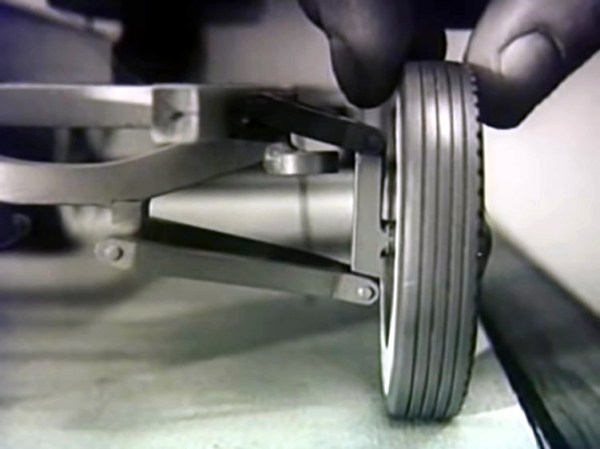While you might have bought the best pair of skis in the 90s or 00s, as parts on boots and bindings start to fail and safety standards for ski equipment improve, even the highest-quality skis more than 15 or 20 years old will eventually become unsafe or otherwise obsolete. There are plenty of things that can be done with a pair of old skis, but if you already have a shot ski and an Adirondack chair made of old skis, you can put another pair to use building one of the fastest sleds we’ve ever seen.
[Josh Charles], the creator of this project, took inspiration from his father, who screwed an old pair of skis to the bottom of an traditional runner sled when he was a kid. This dramatically increased the speed of the sled, but eliminated its ability to steer. For this build [Josh] built a completely custom frame rather than re-use an existing sled, which allowed him to not only build a more effective steering mechanism for the skis, but also to use bicycle suspension components to give this sled better control at high speeds.
This build is part of a series that [Josh] did a few years ago, and you can find additional videos about it documenting his design process and his initial prototypes and testing. The amount of work he put into this build is evident when it’s seen finally traversing some roads that had been closed for winter; he easily gets the sled up in the 30 mph range several times. If you’re looking to go uphill in the snow, though, take a look at this powered snowboard instead.


















